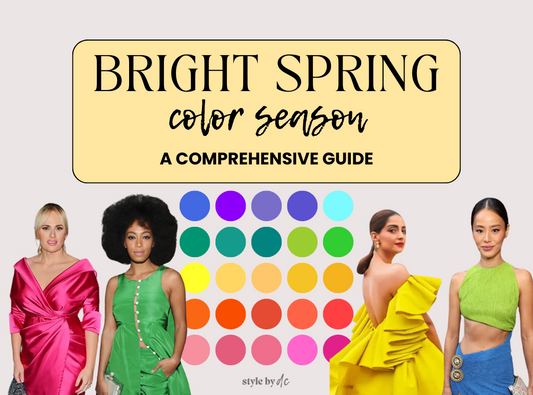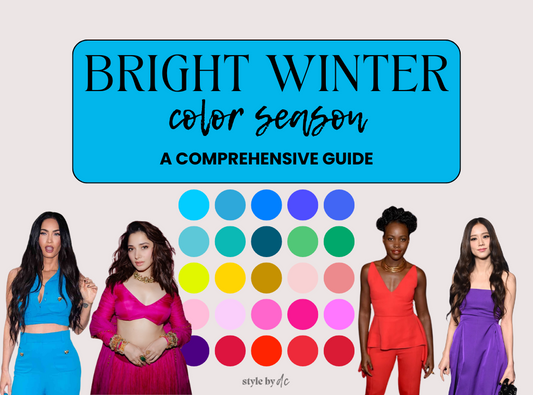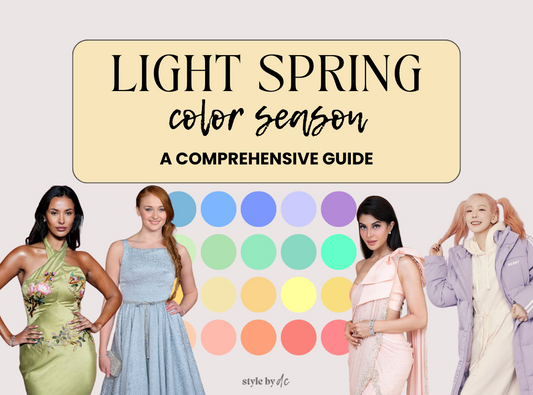If you're considering getting a 16 season color analysis done, you’ve probably come across two main options: in-person or virtual. As someone who offers both, I’ve seen how each can be a powerful tool in understanding your best colors—but they offer slightly different experiences. This guide isn’t here to sway you one way or another, but to help you make the best choice for you.
In-Person Color Analysis
There’s something special about sitting down with a color analyst in real life. The experience can feel a bit like a “treat yourself” day, especially if you’re doing it with a friend.
What to Expect:
- Real-time feedback: You can talk directly with your analyst as the draping is happening, ask questions on the spot, and clarify things in the moment.
- The wow factor of drapes: Seeing fabric drapes held up under proper lighting creates those “aha!” moments when the right color lights up your face.
- Controlled lighting: Most analysts will use neutral, natural-like lighting to ensure accurate results—which can be hard to replicate at home.
- Limited to physical swatches: Because the drapes are tangible, you’re working with a finite selection of colors during the session - although these colors are professionally hand picked to narrow it down to a season.
- Some don’t include a follow-up report: Not all in-person analysts offer written documentation, so you may need to take notes or rely on memory.
- Watch out for bias: Occasionally, an analyst might push for a certain seasonal result based on their preferences or assumptions. A good analyst should stay neutral and exploratory. The best in person sessions are conversational and while the analyst will tell you their professional opinion, they should also be asking how you feel about each color and the overall results.
- More of an experience: Many people describe in-person analysis as a fun, memorable outing—especially if paired with lunch, shopping, or a day with friends.
Virtual Color Analysis
Virtual analysis has gained popularity over the past few years, and for good reason—it’s flexible, accessible, and surprisingly effective when done properly.
What to Expect:
- Convenience and accessibility: No travel required. You can do it from anywhere, often at a lower price point than in-person sessions.
- Can be just as accurate: A skilled analyst who understands lighting and facial features in photos can deliver highly accurate results—sometimes even more so, because they can review your photos multiple times.
- More color testing range: Digital tools allow for comparison across hundreds of swatches and subtle variations in tone that might not be available in physical drapes.
- 1:1 connection still possible: Some virtual services (including mine) offer follow-up video calls to walk through results, answer questions, and make the experience feel personal. If working with an analyst virtually, make sure they are open and easy to get a hold of for follow up questions.
- Photo quality matters: Getting accurate photos is key. Your analyst should provide a thorough guide—and if they only ask for 1 or 2 selfies, that’s often not enough to base a full seasonal assessment on.
- More result-focused: Virtual sessions tend to focus more on delivering a clear outcome and practical tools (like a digital palette) rather than the “day out” experience. That said, some analysts do go the extra mile to make the process feel interactive and engaging.
Final Thoughts
Both in-person and virtual color analysis can be transformative in helping you understand what suits you best. The right option really comes down to your priorities:
- Want the hands-on experience, live draping, and face-to-face interaction? In-person color analysis might be your best bet.
- Looking for flexibility, accessibility, and the ability to revisit your analysis over time? Virtual color analysis could be a perfect fit.
Whichever route you choose, the most important factor is finding an analyst who takes your unique features seriously, communicates clearly, and makes you feel seen—not squeezed into a category.



